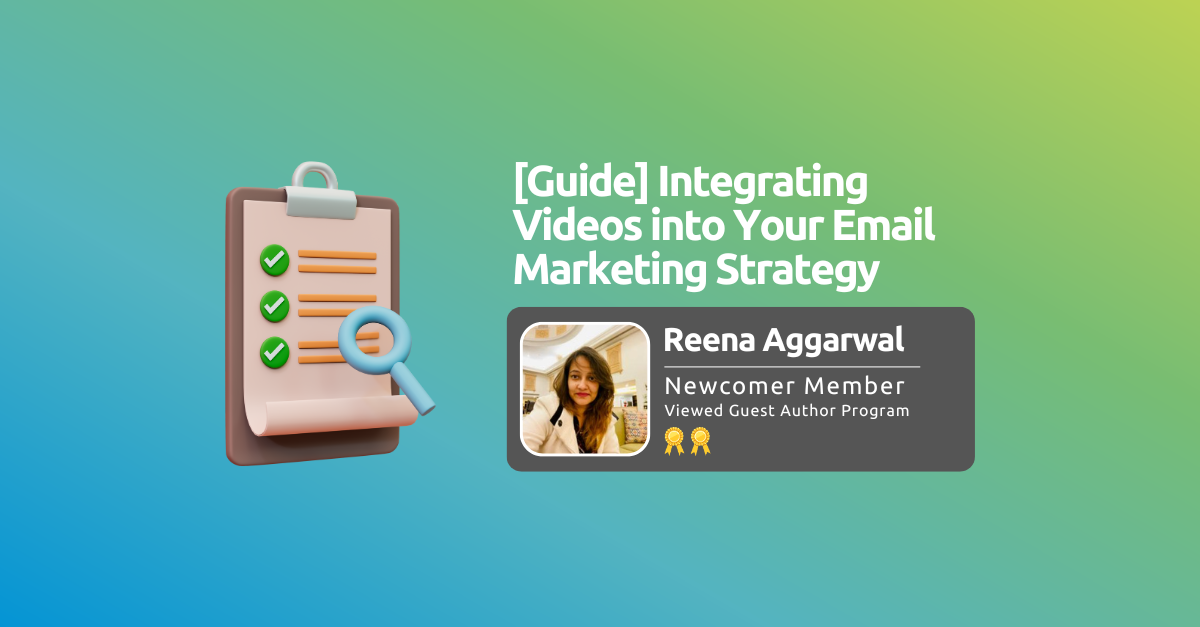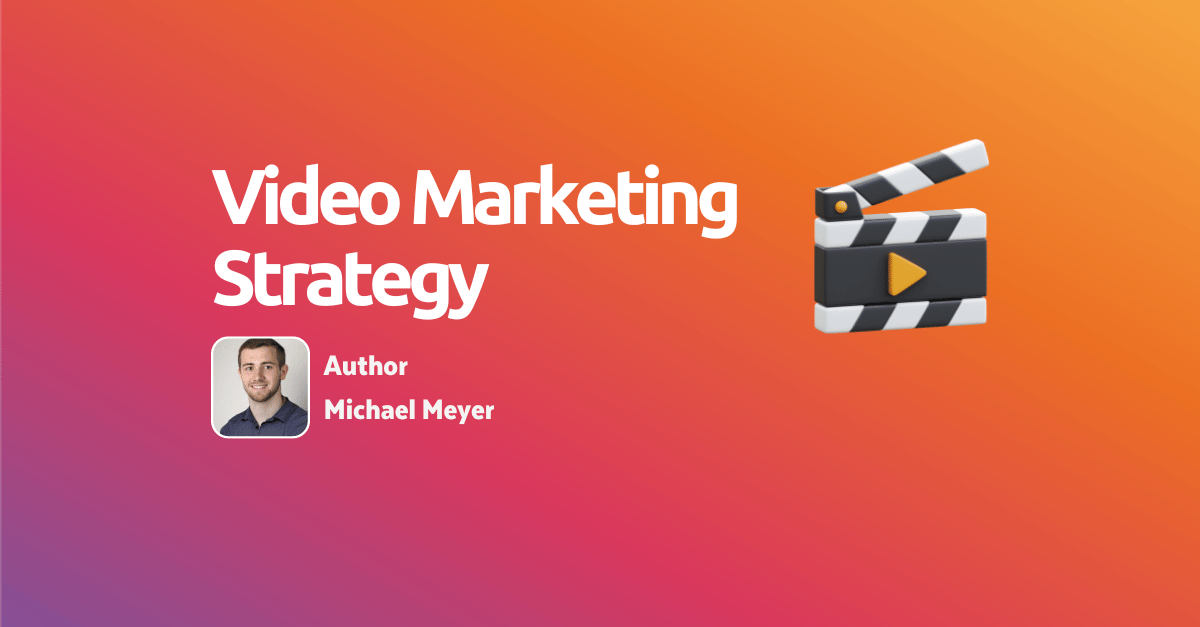In today’s marketing strategies, video content is high on the priority list. And for a good reason, because online presence has exploded and people are watching videos like never before. In fact, videos take up 82% of all internet data (2022) which means that it is the predominant medium to communicate and market with.
Rather than only seeing a picture or a descriptive text, videos give a more realistic understanding of a product or a service and a better idea of how it can help or please the individual customer.
A number of studies show how videos affect buyers' choices. For example, one study shows that 73% of people think they are more likely to buy products after seeing a video presenting their use and benefits. Also, companies notice the difference - 80% claiming to see a direct rise in sales after implementing videos into their marketing strategy.
Creating an effective video can be challenging, but also a lot of fun. First, you need to understand the mechanisms behind marketing videos, then you need to find the ideas for your specific videos, make the video footage, and edit your videos for example by adding AI voiceovers to benefit from better viewer engagement. In this article, we will help you get a stronger understanding of how to make powerful marketing videos to grow your business.
9 Tips to Create a Successful Marketing Video
1. Consider the Effects of Your Marketing Videos
A video needs to cause some kind of effect on its audience to make the audience want to act upon watching it. Whether it surprises them, amazes them, makes them wonder, shocks them, scares them, or makes them laugh - a video can only make an impact if it causes an emotional effect. This is one of the most important things to remember when creating marketing videos!
When people experience an emotional effect from seeing a video, they are likely to engage somehow, by commenting, sharing, liking, or even remembering the product and returning to check it out more and maybe eventually feel the urge or need to try it out.
2. Create Curiosity at First Sight
Although we aren’t talking about speed dating or Tinder profiles - scrolling through videos and deciding which one to continue watching can be compared, because it’s how you present yourself and what kind of first impression you make on others that will decide whether people are interested in more or not. If for example, your video has a thumbnail or a video preview - it has to be eye-catching because that’s the entry to whether people will start watching it or not, so focus on making it irresistible.
Once people are watching - your video intro is the next step. You have around 3 seconds to catch viewers' attention with a good intro. You need them to become engaged in your content, or they are likely going to click away from your video. Therefore make sure the beginning is catchy and isn’t going to be the end. Think of when you watch for example a short video on a platform like Facebook or YouTube - if the first 10 seconds are boring chances are high that you’d probably move on to the next video pretty quickly.
3. Keep your audience engaged throughout your marketing video
Once your audience is curious and engaged they are usually more patient and more likely to keep watching. However, you do need to consider the storyline of your video to avoid high bouncing rates (many viewers clicking away within a few seconds of watching) - as high bouncing rates affect overall engagement metrics negatively. And with bad engagement metrics, your video will be low-ranked - more about ranking later.
First, it’s about catching your viewers' attention and interest, then further along, it’s more about keeping them engaged and not losing their interest. Keep viewers curious about what’s coming next by creating anticipation and letting them sense that something worth waiting for is soon about to happen.
If you are struggling to get views on your videos, don't miss our article with 11 great YouTube ideas to get it.
You have to think about the dynamics of the video - create anticipation, build up tension or excitement, release it throughout the video, or keep the viewer wondering. Think of factors that will keep viewers watching - visual and audible factors such as something attractive or fascinating. Think of the more explanatory factors such as captions, subtitles, and voiceovers. When people understand the video well it’s easier to stay focused and engaged. Also think of the emotional elements in relation to speech intonation, sound effects, and music.
Make your audience want to see more. Don’t give it all away; keep room for wanting to see more and in some cases also for self-interpretation. It can be great to open up for discussion and questions.
4. Let Your Marketing Videos Help You Earn Customers' Trust
There is no magical 1-step way to earn others' trust. Trust is something that is built gradually by being true and helpful to your customers. Be true to reality, highlight the benefits of your product or service, but don’t paint it out as something it’s not. Present videos that many can easily relate to, and show how your product can make a difference. No matter how good your product or service is there will always be unsatisfied customers. But with transparency, good customer support, and a majority of happy customers you can overcome the negative inputs too.
With videos, you can secure that potential customers get more familiar with your brand and product, and little by little trust is built up. 77% of people believe that online companies using videos to show their products are more engaged with their customers than those who don’t use videos. Trust from customers is also based on good reviews, and good engagement metrics such as high numbers of views, likes, shares, and positive comments.
It’s worth looking for a few relevant social media influencers that would possibly be interested in showing your product in their videos. This way your product and brand can be raised by their influence. This can be beneficial, both because many consumers nowadays look up product reviews before purchasing anything, and also because you get more visibility. On YouTube, for example, 67% of viewers say that to get a better idea of whether a product is worth buying they search and watch video reviews.
5. Create Various Kinds of Marketing Videos
There are many different categories of marketing videos such as product videos, testimonial videos, educational videos, company culture videos, marketing videos embedded in emails, social media videos, etc. Some are created by you, and that means you have full control over the creation while others might be created by customers reviewing your product, or influencers promoting your products. It’s beneficial to use different video distribution strategies because each has its own group of potential customers and it’s good to create visibility on more platforms. Therefore you should spread out your cards and make different kinds of marketing videos.
6. Consider Length of Your Marketing Video
Shorter videos are of course easier to watch and can get more views faster; hence they are a great way to create initial awareness about your brand and product. However, sometimes longer videos are also beneficial because they can engage the viewer more with an interesting storyline or familiarization with the content.
The length of your video really should depend on what kind of video your product or service is featured in. On social media platforms like YouTube and TikTok, you can utilize people's love for binging on shorter videos either through ads, your own videos, or borrowed fame from influencers ‘shorts’ or TikTok videos. Also, product videos shouldn’t be too long. However, an educational video or an influencer's ‘normal length’ video will often be longer and more explanatory. Some viewers might be looking for detailed guides on something and there will be time to ‘get to know’ the influencer or presenter which gives the chance to build up trust.
7. Manage Muted Videos
Many people watch videos muted today or just with very low audio volume. It’s a result of our digital world where videos are accessible almost everywhere we go. However, loud audio from devices is less common in public spaces, so to keep discrete and respectful people mute or turn down the volume. Therefore it’s pretty much obligatory to add subtitles to videos or at least captions to assist comprehension and in order for your video to be understood. Not least to support those hard of hearing who encounters around 1 in 20 people worldwide. Studies show that subtitling videos increase attention to, comprehension and memory of videos, and engagement metrics by up to 80%.
8. Strengthen SEO
Include relevant keywords in your title, tags, and description. This helps search engines to categorize and rank your content better, so you achieve better visibility which is another very important factor in online marketing - without views what would be the point?
SEO is short for search engine optimization and is the process of ranking in search engines such as Google, and search engines on social media platforms. If you use platforms like YouTube for example you can add closed caption subtitles to your videos to increase your keyword profile.
Closed caption subtitles can be indexed by search engine ‘robots’ and therefore matter in SEO, as opposed to hardcoded subtitles that are burned onto videos and can’t be detected by ‘robots’ - therefore they do not have direct influence on SEO. Choose keywords relevant to your video content and think of which keywords viewers use to search for specific content.
9. Achieve a Bigger Reach
Video marketing opens up new ways to get through to customers and not least the opportunity to reach a consumer market across borders. You can use subtitles or voiceovers to translate your content into the language of your target audience. This way you do not need to make an individual video for each of your customer target groups. You can just use either translated subtitles or voiceovers to customize your videos to fit different target groups.
Are You Ready to Start Your Video Marketing Journey?
So basically summed up, remember the effect, the first impression, the intro, the viewer attention and engagement, the trust, the video types and distribution, the video length, the muted videos, and a bigger reach. With this in mind, you should be ready to start creating your video marketing strategy or strengthen the one you already have. And don't forget to have fun while doing it! Not, surprisingly 95% of companies who use video marketing say it helps customers to better understand what they offer.




